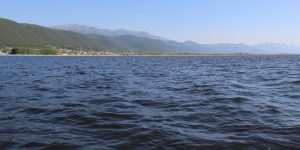According to RF Association of Marine Trade Ports, in January and February 2017 the cargo turnover of Russia’s sea ports grew by 8.2% as compared to the same period last year and totaled 114.8 MT. The volume of transshipment by dry-cargo vessels had reached up to 49.2 MT, which showed a 7.6% increase against a similar preceding period.
This positive dynamics was achieved due to transloading coal – 20.9 MT (+15.2%), containerized cargoes – 6.9 MT (+9.0%), grain – 4.5 MT (+1.2%), ferrous metals – 4.5 MT (+2.5%), mineral fertilizers – 2.7 MT (+7.2%) and refrigerated cargo – 0.5 MT (+13.2%). The volume of bulk liquids transfer grew up to 65.6 MT (+8.7%), in particular, as a result of crude oil refining – up to 38.4 MT (+8.0%), petrochemicals – up to 24 MT (+8.3%) and liquefied gas – up to 2.5 MT (+27.1%). With regard to foreign trade cargoes, their export equaled 90.5 MT (+5.3%), import – 5.2 MT (+15.7%), transit operations – 8.5 MT (+4.5%), cabotage – 10.6 MT (+41.6%). Experts identified the following apparent trend in cargo turnover: growing transshipment of bulk freight, mainly raw materials.
The ports of all basins except for the Caspian Basin demonstrated positive dynamics: harbors of the Baltic Basin had increased their cargo turnover by 9.2% (up to 40.14 MT), the Far East Basin – by 7.8% (up to 28.93 MT) and the Azov-Black Sea Basin – by 3.6% (up to 36.36 MT). The Arctic stevedores achieved the most impressive results – during the reporting period the cargo turnover grew by 41.8% (up to 8.85 MT). However, cargo traffic handled by the Caspian Basin marine ports decreased by 53.4% (down to 0.54 MT).







Comments